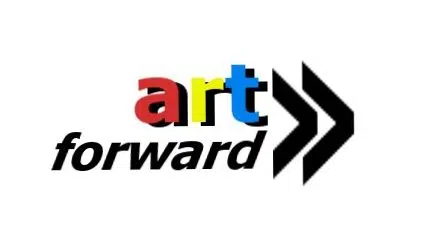
The following is an article written for the Art Forward series from the Rahr-West Art Museum:
It may not seem like it yet, but Spring is nearly upon us. With it, the time-honored tradition of egg decorating. Whether you engage in an all-out Easter egg hunt or simply enjoy dyeing a dozen with family and friends, you can easily recognize that the egg is a timeless symbol of rebirth. What you may not know, and what you will find this March at the Rahr-West Art Museum, is that decorating eggs is a complex artform that stretches throughout global cultures from the beginning of recorded history.
The art of decorating eggs is quite a popular art form because of the attractive, smooth, oval shape of the egg. Any bird egg can be facilitated in this process but most often the larger and stronger the eggshell is, the more favored it will be by artists.
Goose, duck, and hens’ eggs are usually “blown”- that is a hole is made in each end and the contents are blown out. The egg is then either carved, dyed, painted, appliquéd, or wound in string or yarn. Hen eggs that are brown can be scratched and white eggs can be dyed and then scratched.
Some eggs, like emu or ostrich eggs, are so large and strong that the shells may be carved without breaking. Art on the emu eggs take advantage of the contrast in colors between the dark green mottled outside of the shell and the shell underlay. The oldest eggshells, decorated with engraved hatched patterns, are dated for 60,000 years ago in South Africa.
From ancient times to the present day, eggs have been an important symbol in many cultures. In some countries, the egg is a symbol of eternal life and the celebration of spring. For thousands of years, people of ancient cultures in Europe and the Middle East decorated eggs at the time of the Spring Equinox.
One form of egg art comes to us from the Ukraine where more than 10 centuries ago, egg decorating was done by women primarily, using a stylus, which is a tool that has a rounded end that is used to drip beeswax onto the egg and a tiny funnel stylus, or “kistka,” which is used to make the lines referred to as “pysanky”. In Western Ukraine, the belief was that the fate of the world depended on pysanky. As long as this egg art continued, the world would exist. The word “pysanky” derives from the verb for “to write” and the practice of decorating eggs dates back to pre-Christian times. When the people of Ukraine adopted Christianity, pagan symbols were replaced by religious motifs. It became a custom for friends and family to exchange pysanky that had been blessed on Easter morning to commemorate Christ’s teachings of love and peace.

CC / Rahr-West Art Museum
The most popular pysanky designs are geometric; the triangle symbolizing the Holy Trinity, the spiral is said to be protective of evil spirits in a house; diamonds are used to symbolize knowledge. Today this ancient art form continues to be practiced with modern and traditional methods. Of all the Easter eggs from Eastern Europe, Ukrainian eggs are the best known. Pysanky has achieved the status of art and are highly collectible.
Many people immediately think of Peter Carl Faberge´ when decorated eggs are mentioned, but many people do not even realize that Faberge´ did not use real egg shells. His skills were those of an artist, jeweler/enameller and his materials were precious metals and stones, enhanced by beautifully intricate pave’ and shaded enameling. Working in Russia between 1885 and 1916, Faberge’ is best known for his Easter egg designs which were commissioned by the Tsars Alexander lll and his son Nicholas ll as gifts for their wives. Each egg featured a wonderful surprise to delight the recipient and each egg surpassed the previous design.
One needn’t be Faberge to craft a masterpiece. Popular egg decoration involves coloring the egg. Egg decoration continues to develop new forms and old techniques are often revived so that there are a wide variety of techniques to try.
Many dyes used for fabrics were used to color eggs. Dying with natural ingredients such as onion skins, or turmeric give a brown or golden yellow dye and red onions, purple cabbage, and beets give a red color. Frozen blueberries give a light marbled blue color, cranberry juice a light pink, whereas red wine or grape juice produce a purple color and strong coffee make brown and lichens, grass, and various vegetables such as spinach and even flower petals have been used to dye eggs. However, our mass-market egg-dying kits of today, haven’t changed much since a New Jersey drug-store owner came up with the Paas dye tablets that could be mixed with water and vinegar, back in the late 1800’s.
One technique that is popular right now that I recently tried was “silk eggs”. Boiling an egg wrapped with silk in a solution of water and vinegar is used to transfer the pattern from the silk to the egg. Old neckties are a handy source of scrap silk.
Visit the Rahr-West Art Museum to see ‘For the Love of Eggs’ An exhibit guest-curated by the Friends of the Rahr-West Art Museum, on display from March 7 to April 4 in the John West Gallery, and enjoy some egg decorating of your own this Spring. If you have decorated an egg then you have participated in one of the oldest decorative arts!












